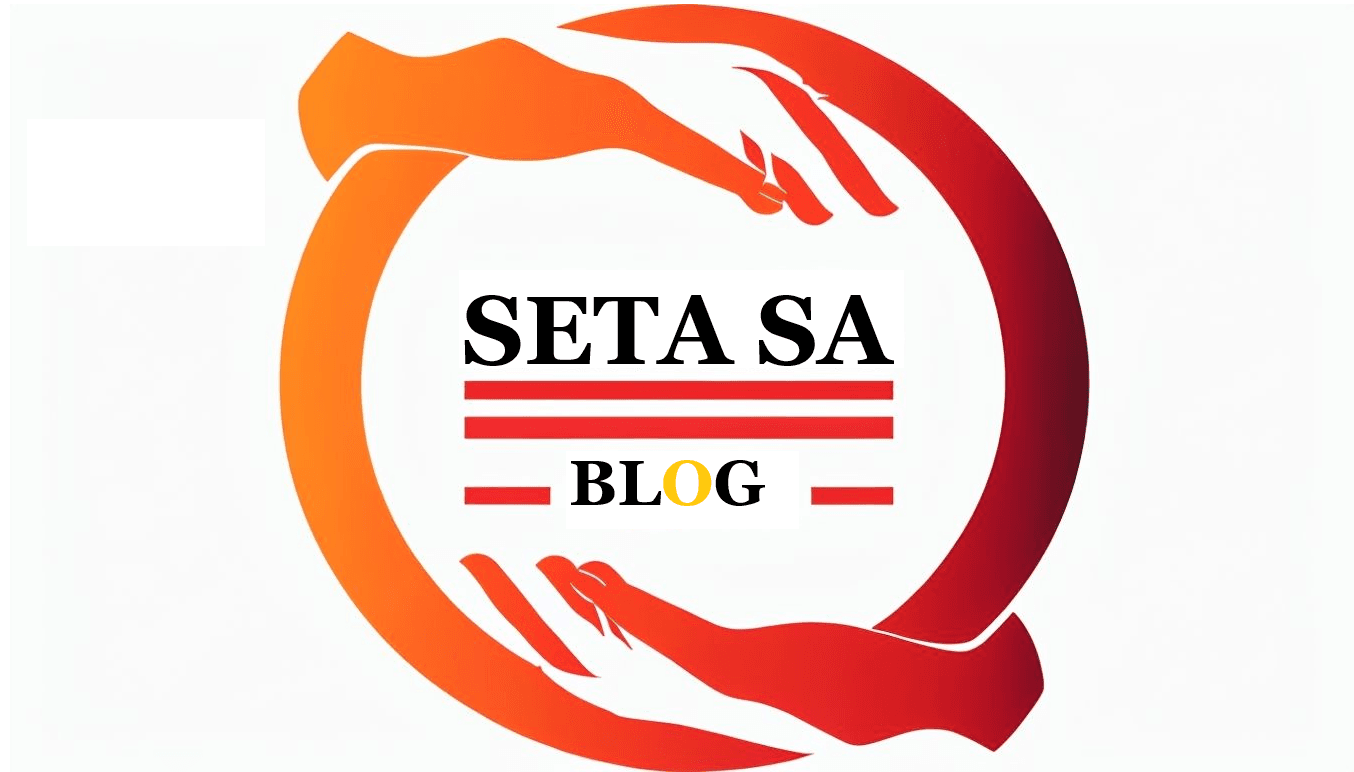
Picture this: You’re 23, unemployed for months, and watching your friends struggle with the same reality. Meanwhile, South Africa’s construction industry is crying out for skilled workers, with thousands of projects requiring qualified professionals. The CETA Learnership Programme 2025 bridges this exact gap – but only if you know how to navigate the registration process correctly.
Last year alone, over 15,000 young South Africans transformed their lives through CETA learnerships, earning while they learned and stepping into permanent employment. This comprehensive guide reveals exactly how you can join them, based on insights from successful participants and industry experts who’ve witnessed the programme’s impact firsthand.
What Makes CETA Learnerships Different from Other Training Programmes?
The Construction Education and Training Authority operates as a government-backed skills development powerhouse, specifically targeting unemployed youth and individuals with disabilities. Unlike traditional apprenticeships that often require prior connections, CETA learnerships offer structured pathways into high-demand construction careers.
Programme participants gain access to:
- Monthly stipends ranging from R1,500 to R3,500
- NQF-accredited qualifications (Levels 2-5)
- Hands-on experience with established construction companies
- Direct pathways to permanent employment
Key specialization areas include:
- Civil Engineering Technology
- Construction Project Management
- Plumbing and Pipefitting
- Bricklaying and Masonry
- Occupational Health and Safety
- Quantity Surveying
- Building Construction Management
For those interested in broader SETA opportunities beyond construction, explore our comprehensive guide to latest SETA learnerships in South Africa covering all sectors.
CETA Learnership Eligibility Requirements: Do You Qualify?
Meeting eligibility criteria represents your first hurdle. Based on official CETA documentation and feedback from training coordinators, successful applicants typically demonstrate:
Essential Requirements:
- South African citizenship (verified through valid ID)
- Age bracket: 18-35 years old
- Current unemployment status
- Educational qualification: Grade 10, 11, or 12 (specific requirements vary by learnership level)
- Availability for full programme duration (12-24 months)
- No concurrent enrollment in other educational programmes
Priority Categories: CETA actively prioritizes applications from previously disadvantaged individuals and people with disabilities, reflecting the programme’s transformation objectives.
How to Create a Winning CETA Learnership CV
Your CV serves as your first impression – make it count. After reviewing hundreds of successful applications, certain patterns emerge among selected candidates.
Essential CV Components
Personal Information Section:
- Full legal name matching ID document
- Active cellphone number and email address
- Physical address with postal code
- South African ID number
- Date of birth
Education Details:
- Highest qualification achieved (with exact year)
- School name and location
- Additional courses, certificates, or workshops attended
- Technical skills or software proficiency
Experience Documentation: Even without formal employment, showcase:
- Volunteer work or community involvement
- Part-time jobs or temporary work
- Family business assistance
- DIY projects or construction exposure
- Leadership roles in community organizations
Professional CV Formatting Tips
Structure for Maximum Impact:
- Keep document length to 2 pages maximum
- Use consistent font (Arial or Calibri, 11-12pt)
- Include clear section headings
- Maintain proper spacing and margins
- Proofread thoroughly for spelling and grammar
For detailed CV registration guidance across all SETA platforms, check our step-by-step tutorial on how to register your CV on SETA platforms.
Skills Section Strategy: Highlight transferable skills relevant to construction:
- Physical fitness and manual dexterity
- Problem-solving abilities
- Teamwork and communication
- Attention to detail
- Willingness to learn new technologies
Step-by-Step CETA Registration Process
Phase 1: Document Preparation
Required Documentation Checklist:
- Certified copy of South African ID (within 3 months)
- Certified copy of highest educational qualification
- Proof of residence (municipal account or affidavit)
- Professional CV and cover letter
- Disability certificate (if applicable)
Certification Requirements: All documents require certification by:
- Police station officials
- Post office personnel
- Commissioner of Oaths
- Bank branch managers
Phase 2: Registration Methods
Online Registration Process:
- Navigate to the official CETA website
- Locate the “Learnerships” or “Training Opportunities” section
- Select “2025 Learnership Applications”
- Complete personal information accurately
- Upload required documents in specified formats (PDF preferred)
- Submit application and save confirmation number
Alternative Registration Routes:
- TVET colleges partnering with CETA
- Municipal development offices
- Accredited training provider locations
- Labour Department career centers
Phase 3: Application Tracking
After submission, monitor your application status through:
- Email confirmations and updates
- SMS notifications to registered cellphone
- Online portal status checks
- Direct contact with training providers
Writing a Compelling Motivational Letter
Your motivational letter differentiates you from thousands of other applicants. Successful candidates often share specific characteristics in their letters. For comprehensive guidance on crafting compelling application letters, read our detailed guide on how to write a motivational letter for learnership applications.
Effective Letter Structure:
Opening Paragraph: Connect your personal situation to the construction industry’s potential. Mention specific challenges you’ve faced and how CETA represents a solution.
Body Paragraphs:
- Demonstrate genuine interest in your chosen construction field
- Reference specific skills or experiences that translate to construction work
- Show understanding of industry demands and career progression
- Express commitment to programme completion and future employment
Closing Paragraph: Reinforce your dedication and express appreciation for consideration without using clichéd phrases.
High-Demand CETA Learnership Fields for 2025
Market research and industry reports indicate exceptional demand in specific construction areas:
Top-Priority Specializations
Infrastructure Development:
- Road construction and maintenance
- Bridge and tunnel construction
- Water and sanitation systems
- Electrical infrastructure installation
Residential and Commercial Construction:
- House building and renovation
- Commercial building construction
- Project management and supervision
- Quality control and inspection
Specialized Technical Areas:
- Health and safety compliance
- Quantity surveying and cost estimation
- Construction equipment operation
- Environmental compliance management
Maximizing Your Selection Chances
Strategic Application Approaches
Timing Considerations: Submit applications within the first two weeks of opening. Late applications face increased competition and potential system overloads.
Geographic Flexibility: Express willingness to train in different provinces or regions, as this significantly increases placement opportunities.
Field Selection Strategy: Research demand in your area and align applications with local construction activity levels.
Common Application Mistakes to Avoid
Documentation Errors:
- Using expired document certifications
- Submitting incomplete or illegible copies
- Providing incorrect contact information
- Missing required supporting documents
CV and Letter Issues:
- Generic motivational letters lacking personalization
- Exaggerating qualifications or experience
- Poor grammar and spelling throughout documents
- Inconsistent information across different sections
What Happens After Registration?
Selection Process Timeline
Shortlisting Phase (4-6 weeks): CETA reviews applications against eligibility criteria and programme capacity.
Interview and Assessment Stage: Shortlisted candidates receive invitations for:
- Face-to-face or telephonic interviews
- Basic literacy and numeracy assessments
- Medical fitness evaluations (field-specific)
- Orientation sessions explaining programme expectations
Placement Allocation: Successful candidates receive formal placement letters specifying:
- Assigned training provider and employer
- Programme start date and duration
- Stipend amount and payment schedule
- Required reporting procedures
During the Learnership Programme
Learning Components:
- Theoretical training at accredited institutions
- Practical workplace experience with host employers
- Regular assessments and competency evaluations
- Portfolio development and evidence compilation
Support Systems:
- Assigned mentors and supervisors
- Regular progress monitoring
- Career guidance and counseling services
- Job placement assistance upon completion
CETA Learnership Benefits and Career Outcomes
Financial Support Structure
Monthly Stipends by Level:
- NQF Level 2: R1,500 – R2,000
- NQF Level 3: R2,000 – R2,500
- NQF Level 4: R2,500 – R3,000
- NQF Level 5: R3,000 – R3,500
Additional Benefits:
- Transport allowances (where applicable)
- Protective equipment and uniforms
- Learning materials and textbooks
- Insurance coverage during training
Long-term Career Impact
Employment Outcomes: Research indicates that 78% of CETA learnership graduates secure employment within six months of completion, with average starting salaries ranging from R8,000 to R15,000 monthly.
Career Progression Pathways:
- Supervisory and management roles
- Specialized technical positions
- Entrepreneurship opportunities
- Further education and professional development
Getting Additional Support and Information
Official Resources
Primary Contact Channels:
- CETA Official Website: www.ceta.org.za
- Customer Service: 011 265-5900
- Email Inquiries: info@ceta.org.za
Regional Support Offices: CETA maintains offices in all nine provinces, offering localized support and information sessions.
Community Resources
Partner Organizations:
- National Youth Development Agency (NYDA)
- Department of Higher Education and Training
- Local TVET colleges
- Municipal economic development offices
Social Media Updates: Follow CETA’s official Facebook and Twitter accounts for real-time announcements and application deadline reminders.
Taking Action: Your Next Steps
The CETA Learnership Programme 2025 represents more than just training – it’s your gateway to economic independence and professional growth in South Africa’s expanding construction sector. With proper preparation and strategic application, you position yourself among the select few who transform unemployment into career opportunity.
Start gathering your documents today. Research your preferred specialization area. Craft your CV with care and attention to detail. Most importantly, submit your application early and follow up appropriately.
Remember, thousands of young South Africans are competing for limited spots. Those who prepare thoroughly, apply strategically, and demonstrate genuine commitment to the construction industry will secure their place in this life-changing programme.
Your construction career begins with a single step – registering your CV correctly. Take that step today, and take control of your professional future through CETA’s proven pathway to employment and skills development.
This guide reflects current CETA programme information and application procedures. Always verify specific requirements and deadlines through official CETA channels, as programme details may change without notice.





